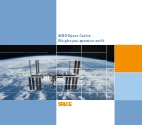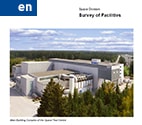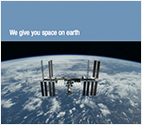Thermal vacuum and thermal balance tests (TV/TB)
During their service life in space satellites are exposed to high vacuum and various thermal conditions which can be simulated in IABG’s thermal vacuum chambers. While the high vacuum is implemented using different pumping systems, high and low temperatures are generated with the help of the chambers’ thermal walls and nitrogen or helium as heat transfer media.
The following tests can be accomplished:
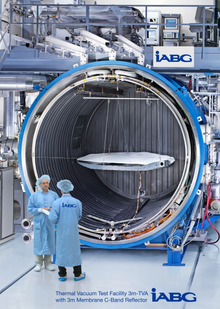
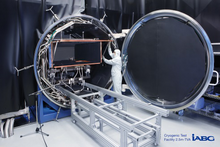
Thermal vacuum tests (TV)
- Thermal function tests in high vacuum conditions, both of complete systems and individual thermal control sub-systems at changing temperatures.
Thermal balance tests (TB)
- Thermal equilibrium tests in the vacuum with different temperature levels allowing the verification of thermal model calculations.
Thermal vacuum cycling tests (TC)
- Tests that expose the test item to a certain number of temperature cycles with a given minimum and maximum temperature as well as with pre-defined holding times and temperature ramps.
Bake-out tests
- Tests where the test item is exposed to high temperatures in the vacuum for a defined time allowing the removal of gassing products such as silicone in structures or adhesives.
Very low-temperature tests at cryogenic temperatures
- Thermal wall temperatures in the test chambers are normally managed using liquid or gaseous nitrogen allowing for a minimum temperature of approx. 90 Kelvin, a limit more than sufficient for most test campaigns. Even lower temperatures are required in special cases, such as Testing of cooled optical instruments. For these cases, IABG operates a test chamber equipped with a helium cooling system. Temperatures of up to 10 Kelvin, i.e. conditions close to the absolute zero, can be generated here.
- ISO 9001
- EN 9100
- Accreditation Calibration Lab for Mechanical Units according to DIN EN ISO/IEC 17025
- Accreditation of Testing Lab for Qualification Tests (PLQ) according to DIN EN ISO/IEC 17025
- > > > Overview of test methods w.r.t. flexible accreditation
- Certification of Space Test Centre according to ECSS-Q-20-ST-07C
- AEO (Authorised Economic Operator)
